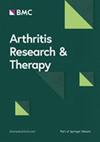血清syndecan1可反映ANCA相关性血管炎患者诊断时的活动情况并预测随访期间的死亡情况
IF 4.9
2区 医学
Q1 Medicine
引用次数: 0
摘要
本研究调查了抗中性粒细胞胞浆抗体(ANCA)相关性血管炎(AAV)患者在诊断时的血清syndecan1是否反映了诊断时的活动性,并预测了随访期间的不良预后。该研究从韩国确诊的 AAV 患者队列中纳入了 79 名 AAV 患者。研究人员评估了 AAV 的特异性指标,包括伯明翰脉管炎活动评分(BVAS)、五因素评分(FFS)、36 项短式调查(SF-36)身体和精神部分摘要(PCS 和 MCS)以及脉管炎损伤指数(VDI)。此外,还收集了包括红细胞沉降率(ESR)和C反应蛋白(CRP)水平在内的实验室数据。BVAS的最高三分位数和上半部分被初步定义为具有高AAV活性。对诊断时储存的血清中的血清辛迪加1水平进行测定。诊断时的血清辛迪加1与AAV活性和功能状态(通过BVAS、FFS、SF-36 PCS、MCS和急性期反应物(包括血沉和CRP)评估)显著相关。诊断时血清syndecan1≥76.1 ng/mL的患者和诊断时血清syndecan1≥60.0 ng/mL的患者诊断时BVAS最高三分位数和上半部分的风险分别显著高于无血清syndecan1的患者。诊断时血清syndecan1≥120.1 ng/mL的患者在随访期间的全因死亡风险明显高于未检测到syndecan1的患者,而且患者的累积生存率也明显低于未检测到syndecan1的患者。诊断时的血清syndecan1不仅可以反映诊断时的AAV活性,还可能与随访期间的全因死亡率有关。本文章由计算机程序翻译,如有差异,请以英文原文为准。
Serum syndecan1 has the potential to reflect activity at diagnosis and predict death during follow-up in patients with ANCA-associated vasculitis
This study investigated whether serum syndecan1 at diagnosis reflects activity at diagnosis and predicts poor outcomes during follow-up in patients with antineutrophil cytoplasmic antibody (ANCA)-associated vasculitis (AAV). The study included 79 patients with AAV from the cohort of Korean patients diagnosed with AAV. AAV-specific indices, including the Birmingham vasculitis activity score (BVAS), five-factor score (FFS), 36-item short-form survey (SF-36) physical and mental component summary (PCS and MCS), and vasculitis damage index (VDI), were assessed. Laboratory data including erythrocyte sedimentation rate (ESR) and C-reactive protein (CRP) levels were also collected. The highest tertile and upper half of the BVAS were tentatively defined as having high AAV activity. Serum syndecan1 levels were measured in sera stored at diagnosis. Serum syndecan1 at diagnosis was significantly correlated with AAV activity and functional status, as assessed by BVAS, FFS, SF-36 PCS, MCS, and acute-phase reactants, including ESR and CRP. Patients with serum syndecan1 ≥ 76.1 ng/mL at diagnosis, and those with serum syndecan1 ≥ 60.0 ng/mL at diagnosis showed significantly higher risks for the highest tertile and the upper half of BVAS at diagnosis than those without, respectively. Patients with serum syndecan1 ≥ 120.1 ng/mL at diagnosis had a significantly higher risk for all-cause mortality during follow-up than those without, and further, exhibited a significantly lower cumulative patients’ survival rate than those without. Serum syndecan1 at diagnosis may not only reflect AAV activity at diagnosis but may also be associated with all-cause mortality during follow-up.
求助全文
通过发布文献求助,成功后即可免费获取论文全文。
去求助
来源期刊

Arthritis Research & Therapy
RHEUMATOLOGY-
CiteScore
8.60
自引率
2.00%
发文量
261
审稿时长
14 weeks
期刊介绍:
Established in 1999, Arthritis Research and Therapy is an international, open access, peer-reviewed journal, publishing original articles in the area of musculoskeletal research and therapy as well as, reviews, commentaries and reports. A major focus of the journal is on the immunologic processes leading to inflammation, damage and repair as they relate to autoimmune rheumatic and musculoskeletal conditions, and which inform the translation of this knowledge into advances in clinical care. Original basic, translational and clinical research is considered for publication along with results of early and late phase therapeutic trials, especially as they pertain to the underpinning science that informs clinical observations in interventional studies.
 求助内容:
求助内容: 应助结果提醒方式:
应助结果提醒方式:


